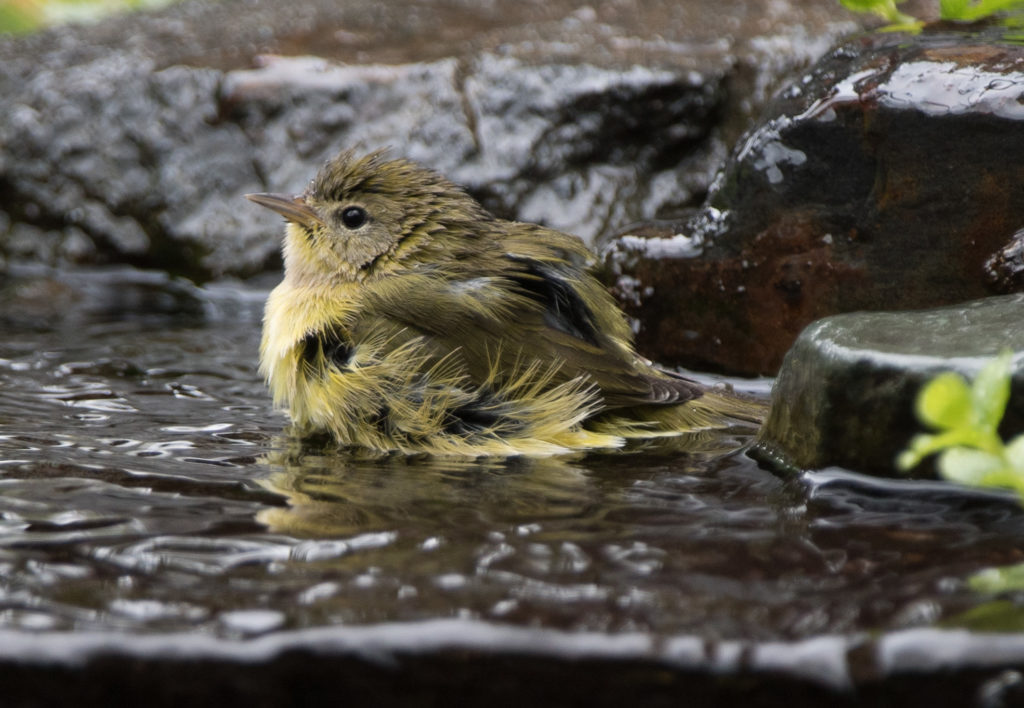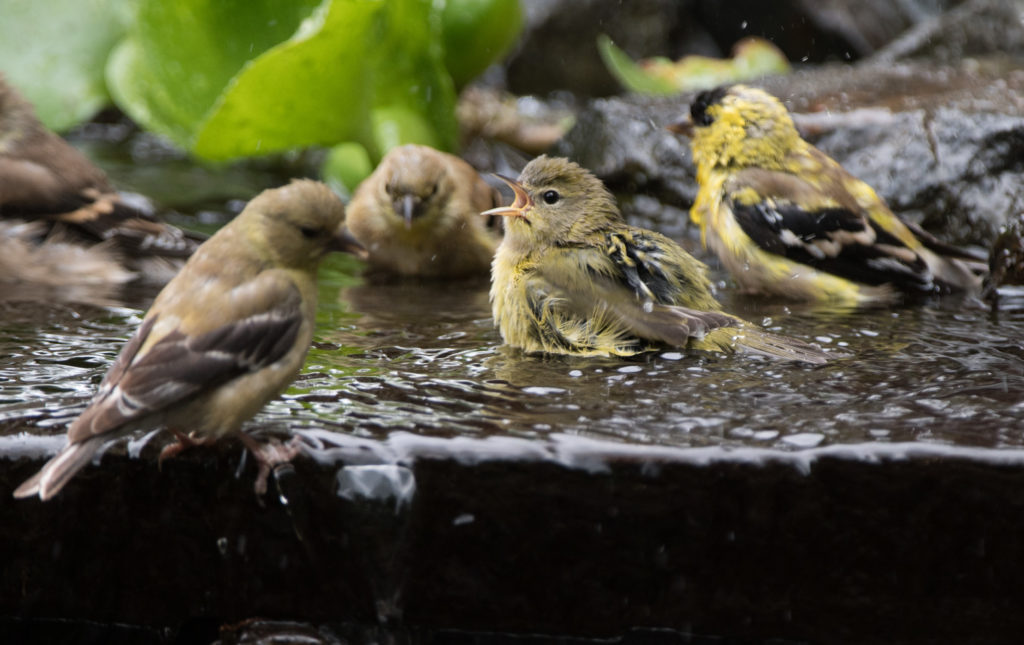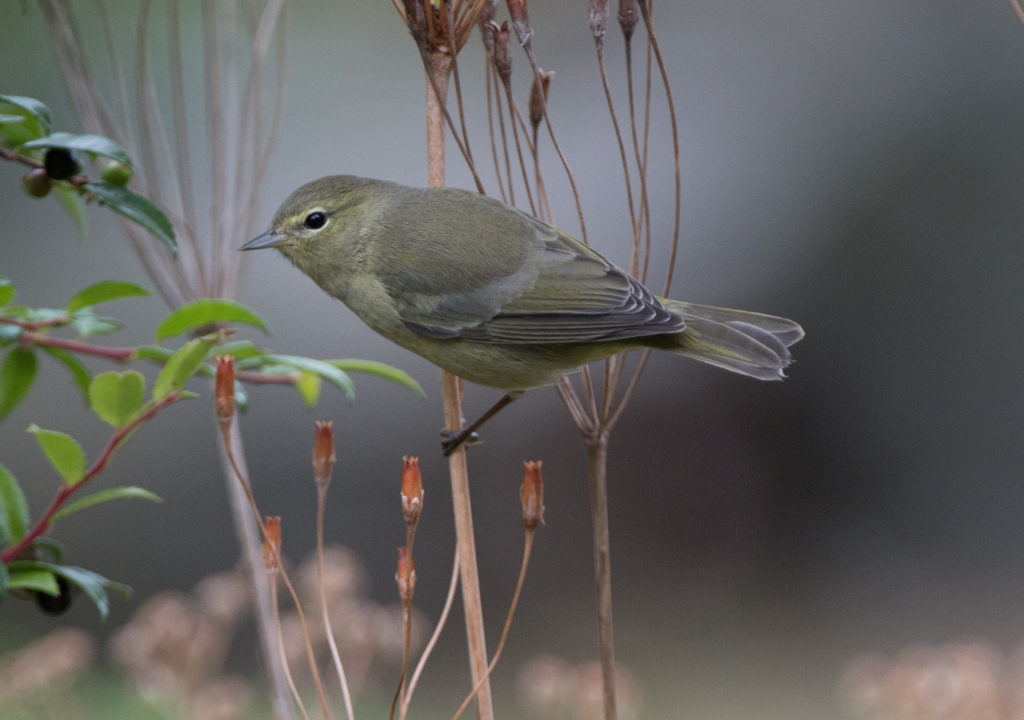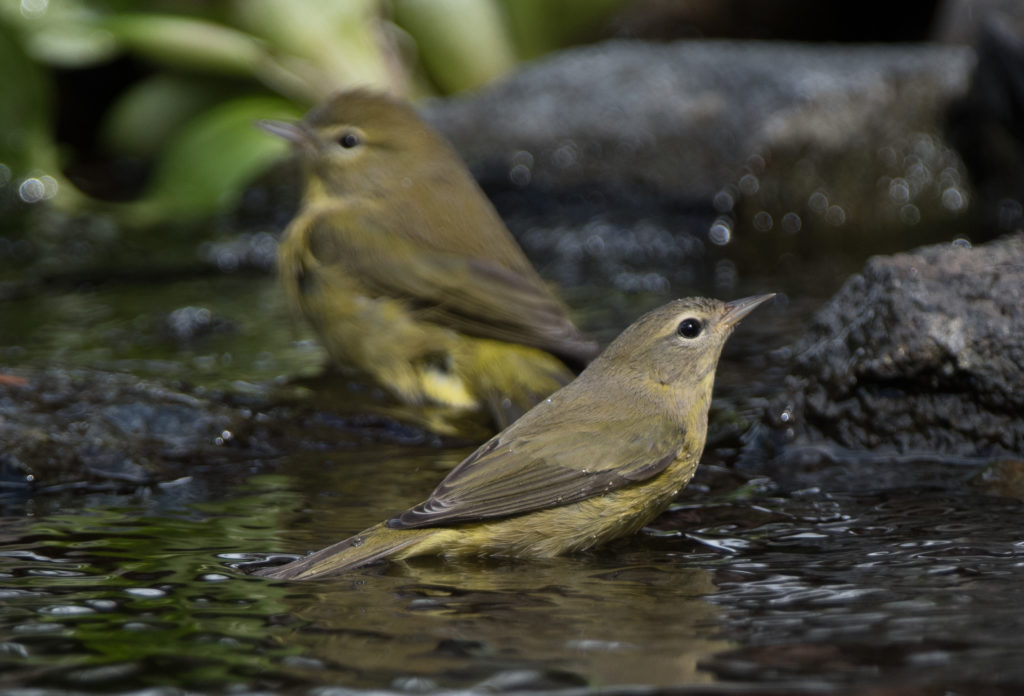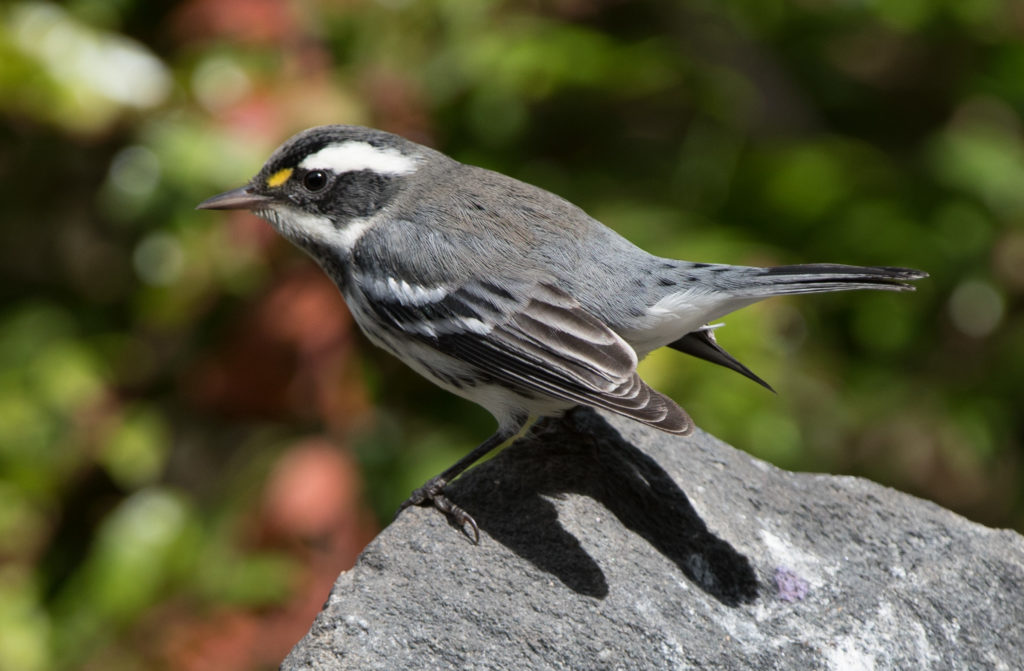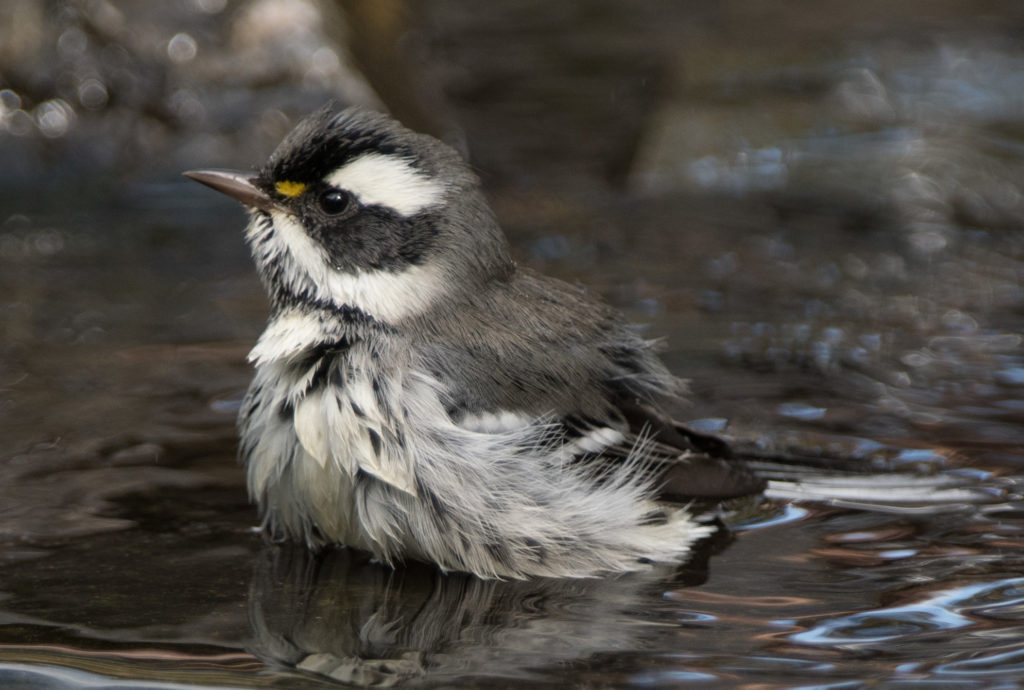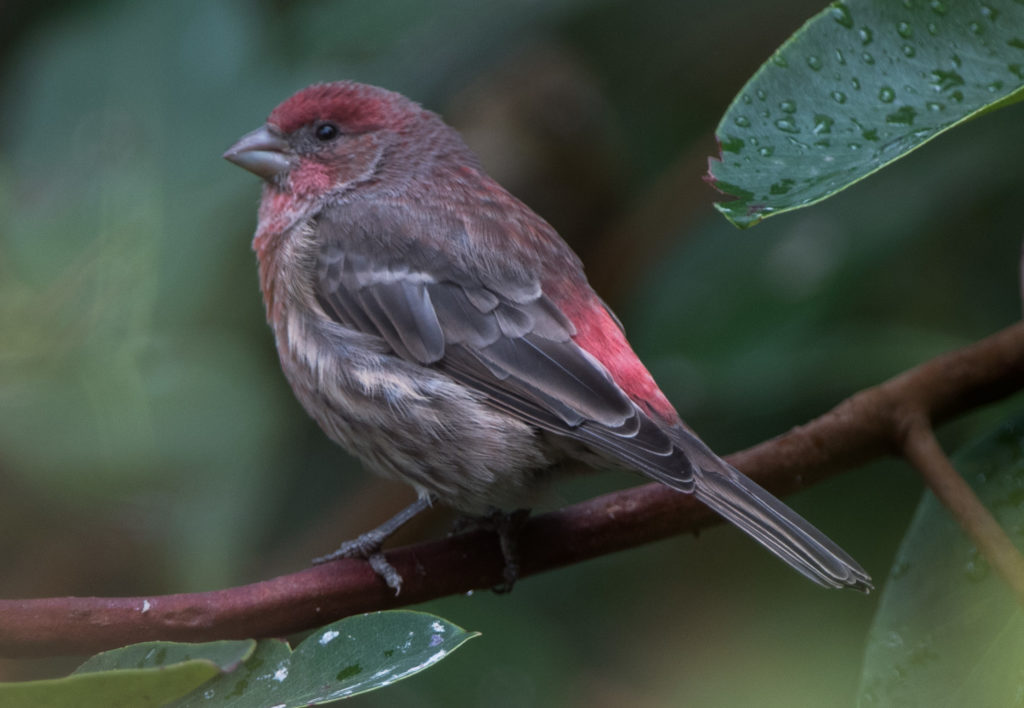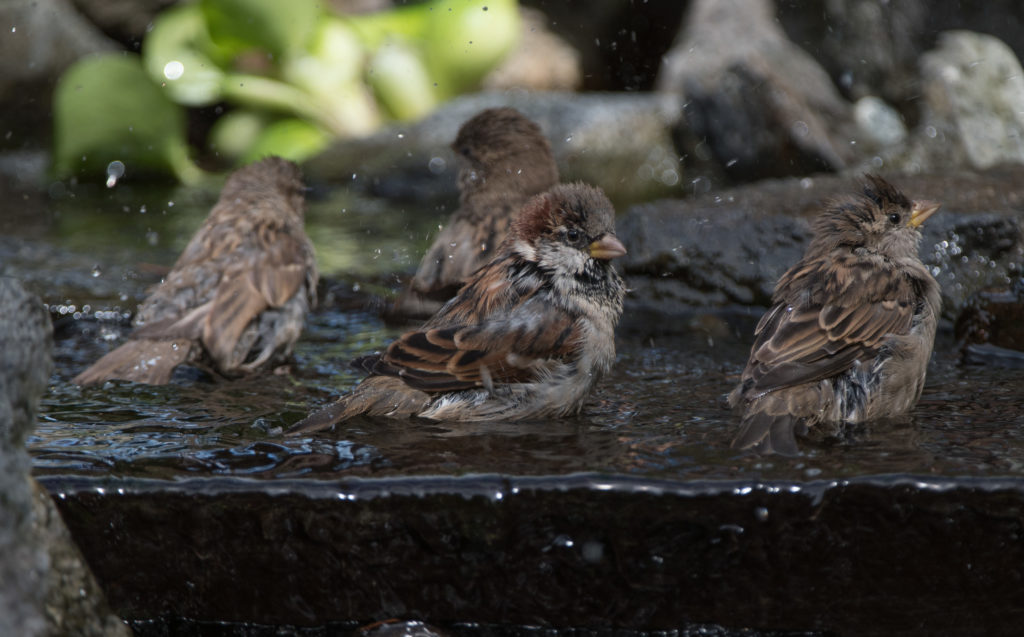I believe that the fall migration is on! This past week, with virtually no warblers for the past couple of months, we are suddenly experiencing an influx of warblers. Our most common visitors are Orange-crowned warblers, one of which is pictured below taking a bath in our watercourse.
On August 31, within the space of about 15-minutes, I saw two Orange-crowned warblers, a male Wilson’s warbler and two female Wilson’s warblers. During this same time period I also saw a male Golden-crowned kinglet and a Brown creeper.
Here’s another photo of the Orange-crowned warbler bathing amid a group of juvenile American goldfinches. I believe that it might have its beak open to warn the other birds not to interfere with its bath!
Here’s another photo of an Orange-crowned warbler… it hardly looks like the same species, but there’s considerable variation in the coloration, especially at this time of year. And I always think the birds look yellower when wet.
And here’s a photo I took today, once again with two of the warblers in the yard (in this case the watercourse) at the same time.
Today I also had two different visits from one or more Black-throated gray warblers. At first I thought that one had been a male and the other female, but after careful examination of my photos I realized that both were male. In these photos it’s not particularly evident that the black throat extends to the beak, which would be a characteristic of the female.
And as a little bonus, I’m including a photo of this male House finch which clearly shows the red patch on the bird’s rump. This patch is not always visible when observing birds in the field.
Here’s a little gathering of House sparrows having baths in the watercourse. I liked the male sparrow in the center of the photograph.

